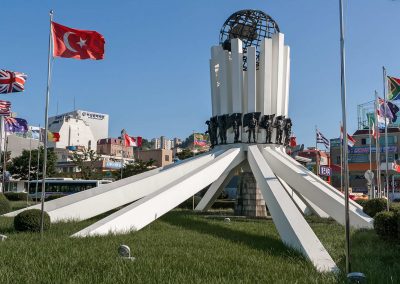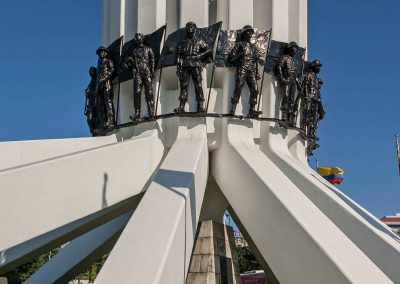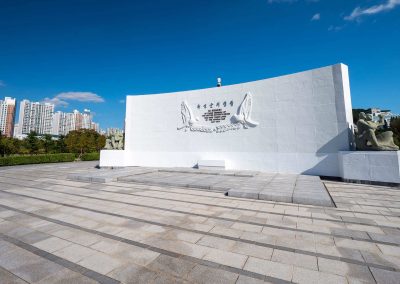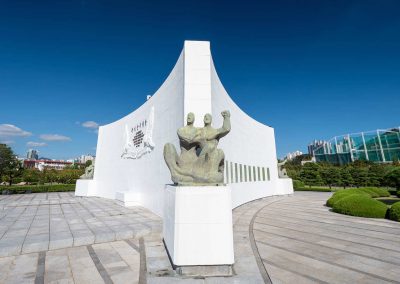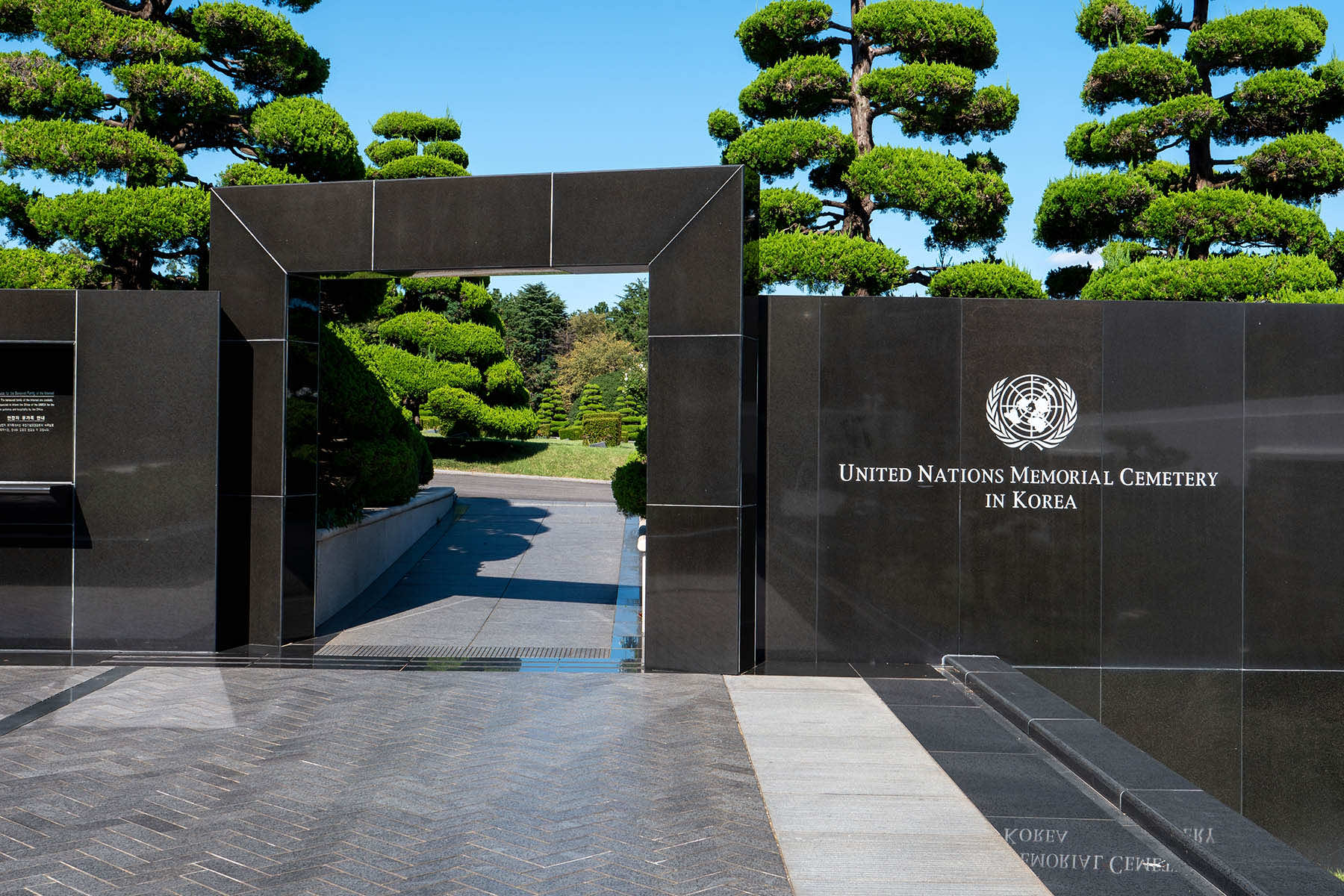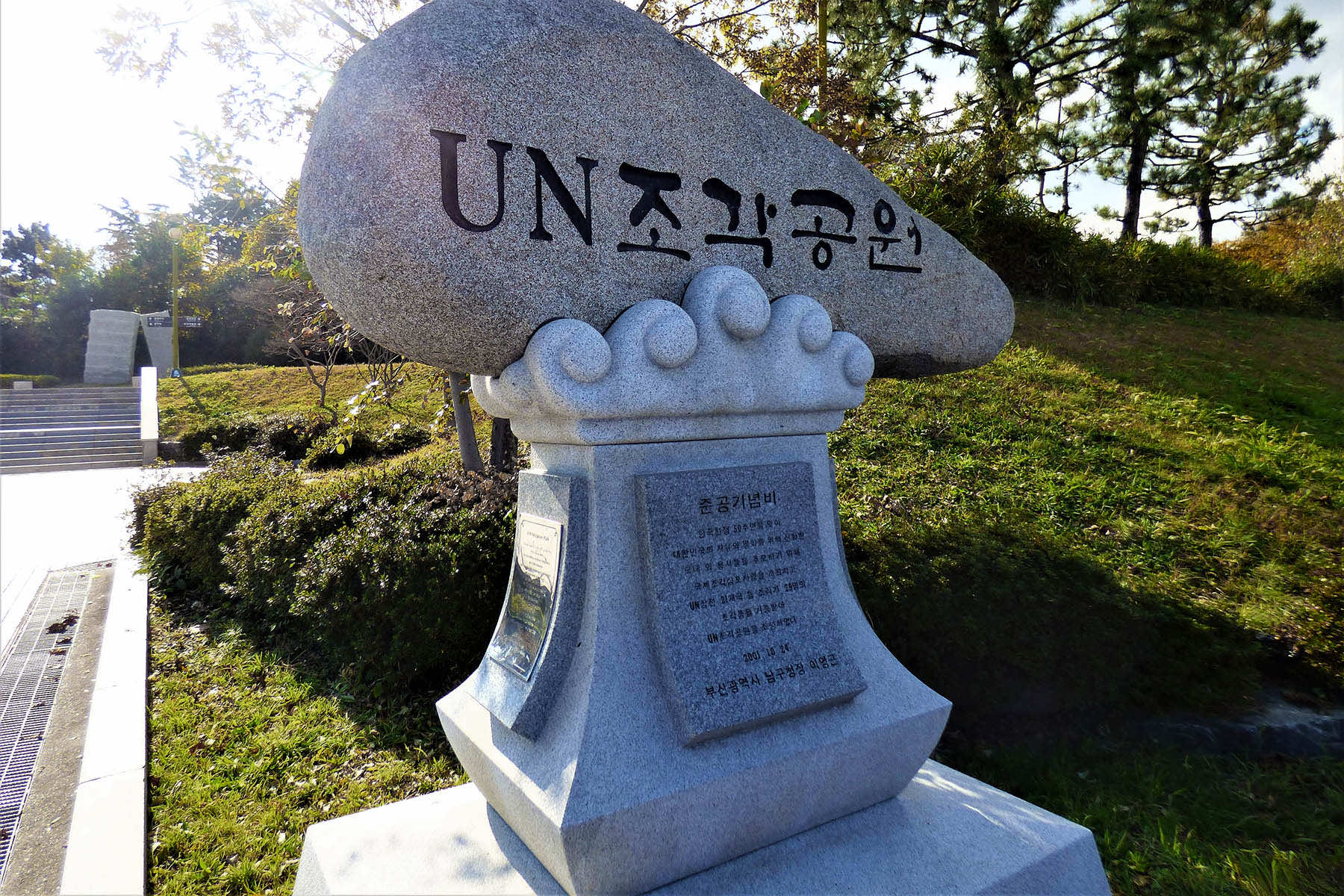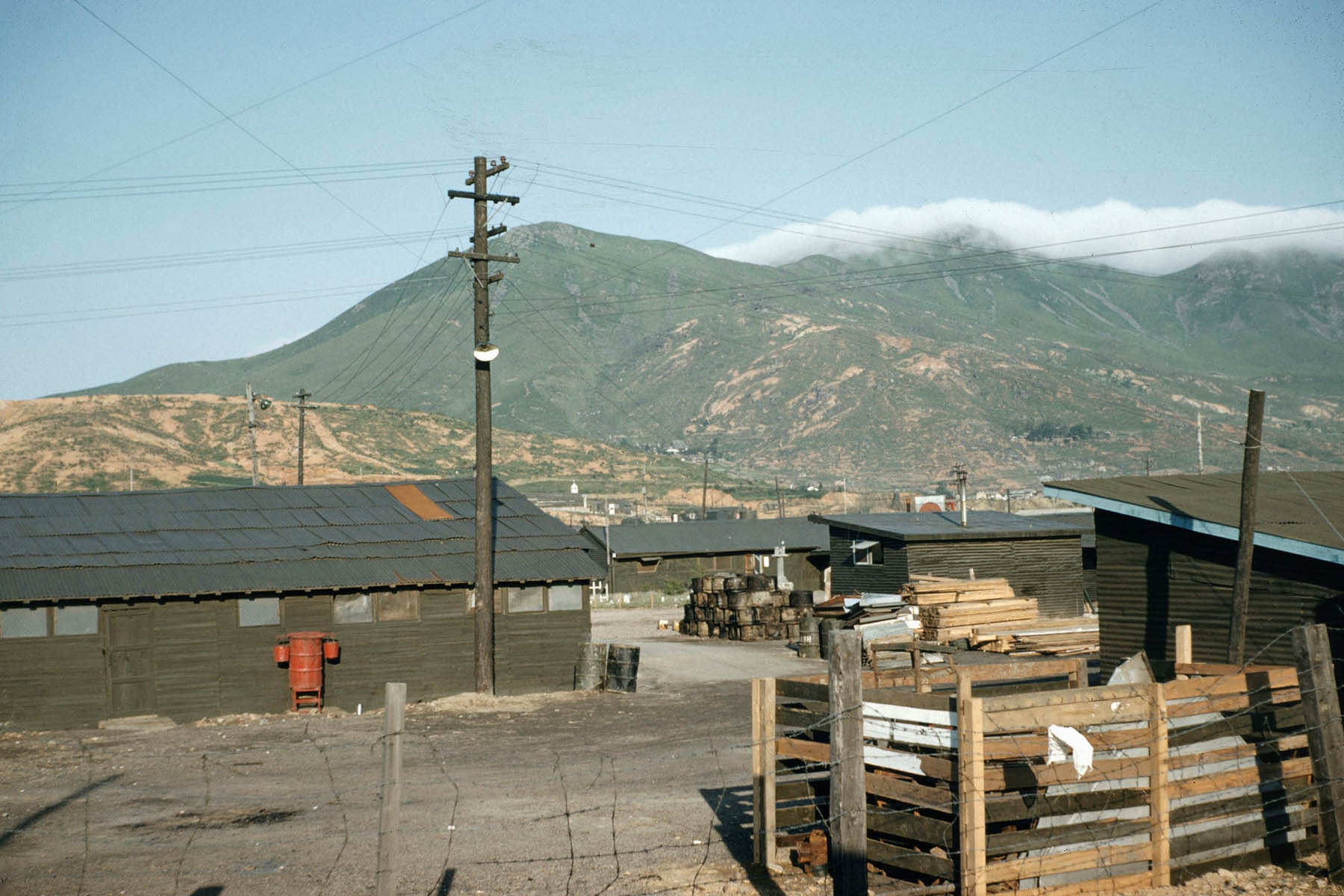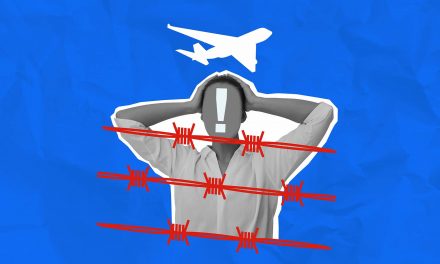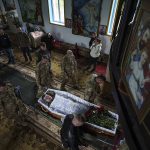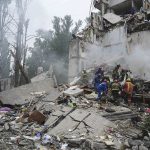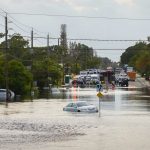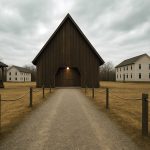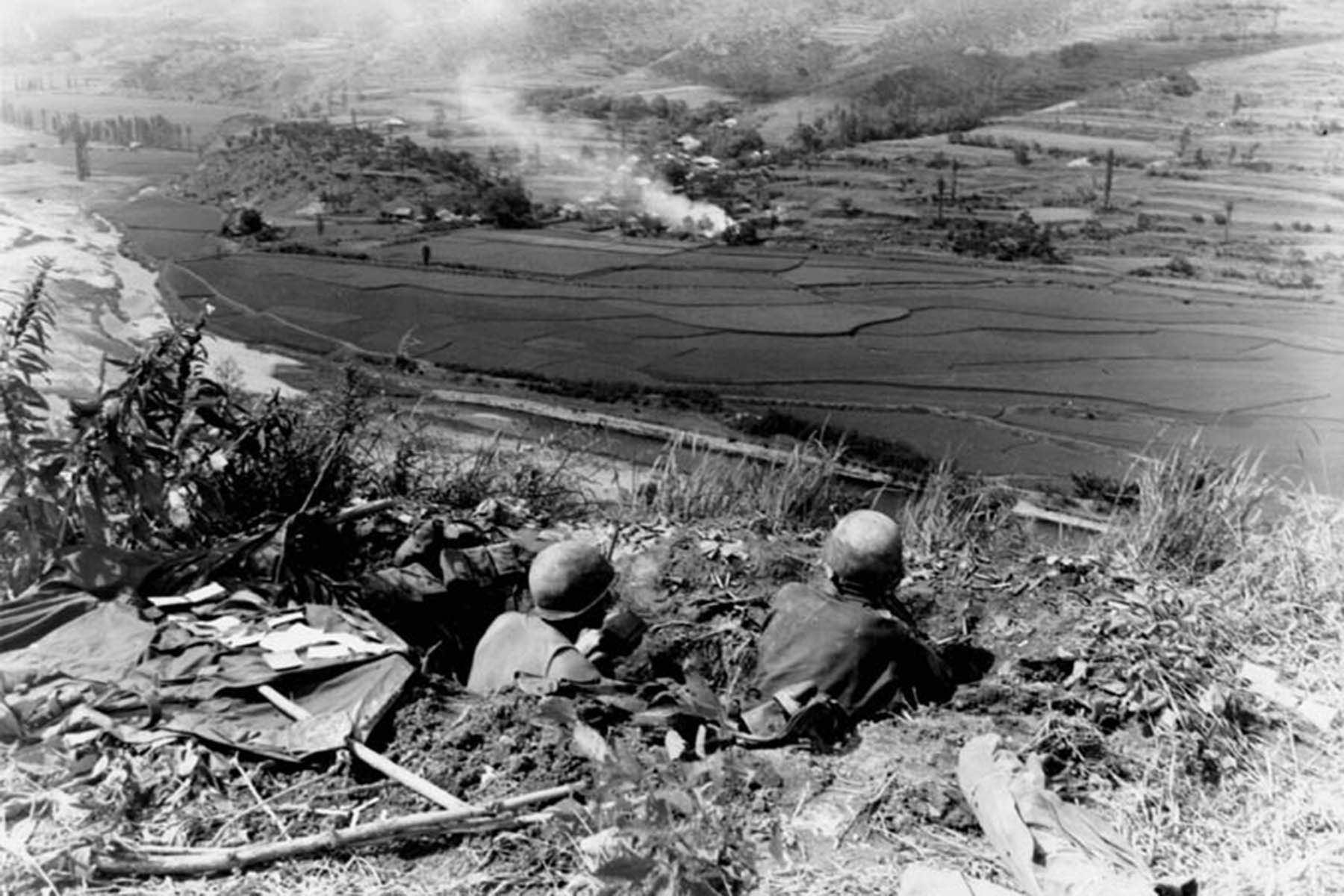
Seventy-five years ago, in the summer of 1950, South Korea, the United States, and their allies faced the prospect of total defeat on the Korean Peninsula.
North Korean forces had surged south in a lightning offensive that began on June 25, crushing South Korean and U.S. defenses and capturing Seoul within days. What followed was one of the most critical and often overlooked battles in American military history, the defense of the Pusan Perimeter.
Surrounded on three sides by the Sea of Japan and the enemy’s advance, the Pusan Perimeter was a shrinking foothold around the southern port city of Busan. It became the final line of defense for United Nations forces hastily assembled under U.S. command. Without it, the war might have ended within weeks with a North Korean victory.
Instead, it became the staging ground for a fierce and costly stand that turned the tide. From August to September 1950, American, South Korean, and other allied troops dug in, holding a 140-mile defensive line stretching from the coast to the Naktong River valley.
Among the soldiers who landed within this tight defensive ring was Dale King, a 21-year-old from Oshkosh, Wisconsin.
King served in the 555th Field Artillery Battalion. In later oral histories, he recalled the sheer uncertainty of those first weeks.
The perimeter, compressed and chaotic, offered little comfort. Supplies were rushed in through the port of Busan, one of the last safe zones in the South. Troops were exhausted, artillery was stretched thin, and command struggled to stabilize the line. But the perimeter held.
King would later be captured and held as a prisoner of war. His recollections remain one of the few firsthand Wisconsin accounts of life inside the perimeter before U.S. and UN forces mounted a counteroffensive. His survival and testimony preserve a connection to a moment when the war’s outcome hung in the balance.
Not every Wisconsinite was fortunate to return home. Corporal Robert P. Raess of Dodgeville, a member of Charlie Company, 1st Battalion, 23rd Infantry Regiment, 2nd Infantry Division, was reported missing in action on September 1, 1950.
He was engaged in combat near Changnyeong, along the Naktong River—an area fiercely contested during the North Korean assault on the western edge of the perimeter. It was there that some of the heaviest fighting occurred as North Korean troops attempted multiple crossings in an effort to fracture the American line.
Raess’s name remained on the rolls of the missing for decades. His remains were ultimately identified last year through advanced DNA analysis and repatriated to Wisconsin. He was buried with full military honors on September 7, 2024. It was a quiet but powerful reminder that the legacy of the Busan Perimeter still reaches into Wisconsin communities, sometimes through loss, sometimes through memory.
The defense of the Pusan Perimeter was not merely a holding action. It marked a strategic pivot point in the Korean War. With time bought by the defenders, General Douglas MacArthur launched the bold amphibious landing at Incheon in mid-September 1950, which broke the siege and forced a North Korean retreat. But none of that would have been possible without the 45 days of resistance fought on the southeastern edge of the peninsula.
Though often overshadowed by later campaigns, the perimeter became a defining symbol of resolve. Its success preserved South Korea as a sovereign nation and set the stage for the modern security alliance between Seoul and Washington.
This year, as the world marks the 75th anniversary of the start of the Korean War, new efforts have emerged to highlight personal stories. In Wisconsin, that reflection will take flight with the EAA AirVenture Oshkosh 2025. From July 21 to 27, Korean War-era aircraft will be featured as part of its historical programming.
Among the confirmed models to be displayed are the F-80 Shooting Star and F-86 Sabre. They are a nod to the jets that flew cover during the defense of the Pusan Perimeter, from hastily built airstrips inside the shrinking defense zone, for the soldiers from Wisconsin who held the ground.
For those who grew up far from the hills of Busan, such reminders serve as more than historical pageantry. They are essential touchstones for understanding what was truly at stake in the summer of 1950, and who paid the price.
Many of the men who defended the Pusan Perimeter came home with little recognition. Some never came home at all. And for decades, the battle itself lived in the shadow of more cinematic campaigns, like the Inchon landing, the frozen retreat from Chosin, and the seesaw battles along the 38th parallel. But in recent years, the perimeter has reclaimed its place in the historical record, not just as a tactical line in the sand, but as a symbol of a desperate and determined resistance.
It was not a place of heroics in the traditional sense. There were no sweeping victories, no triumphant flags raised on hilltops. The perimeter was characterized by trench rot, heat, and artillery duels that lasted for days. It was rifle fire across rice paddies and bodies lost in the Naktong River. Soldiers like Raess, who vanished in the chaos of the September fighting, were not just statistics. They were part of the defensive line, men who disappeared while holding a position no one could afford to lose.
King recalled arriving by sea from Japan with his unit and being thrown into the perimeter without clear orientation or preparation. In his oral history, he described the perimeter as a place with no clear front, no reliable maps, and little communication. His memories suggest a survival mindset, where making it through each day was the only plan that mattered.
Those who served in the perimeter would eventually be absorbed into larger operations, advancing north after the Inchon landings. But for the rest of their lives, the memory of those first weeks remained the defining image of the war. Many, like King, carried those memories privately for years before feeling compelled to speak about them.
Others, like the family of Corporal Raess, had no story to tell for decades. Only a name on a missing-in-action list, and a date: September 1, 1950. For them, his burial in 2024 marked the end of a question that had lingered since the war’s earliest and least certain days.
There is no monument to those who served at the Pusan Perimeter in Wisconsin. No named street or dedicated exhibit. Its memory survives in fragments, in military records, oral histories, and folded flags. But its meaning endures. The perimeter was never supposed to be a final stand. It was supposed to buy time. What it became was the first proof that the war would not be lost.
Seventy-five years later, the war is still not over. No peace treaty was ever signed. The DMZ remains one of the most heavily militarized borders in the world. And yet, South Korea stands. Its cities are vibrant. And its democracy endures.
The survival of South Korea did not begin at the perimeter, but it was nearly decided there by exhausted troops. Among them were two young men from Wisconsin. One who made it back. One who came home 74 years later.
© Photo
Thomas Nebbia / U.S. Army Korea (Historical Image Archive), Morning Calm Weekly Newspaper Photo Archive (CC BY-NC-ND 2.0), and Tom PJ, Shepps, Ko-Tori, Ojup (via Shutterstock)

